Purple, Prickly and Beautiful: Santa-rita Prickly Pear
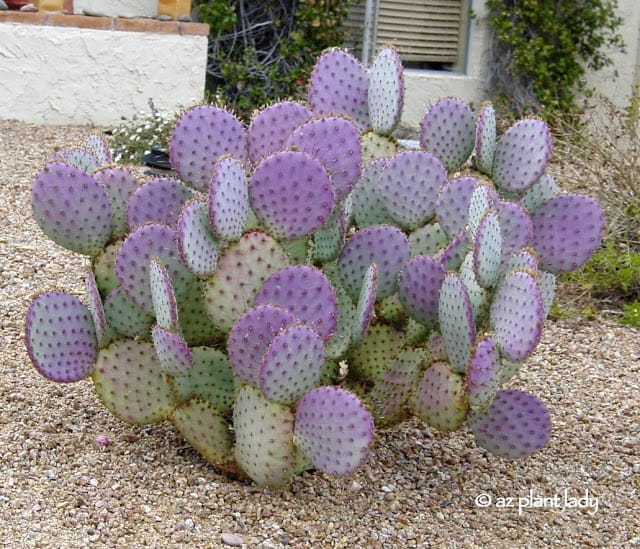
Exploring the Beauty of Prickly Cactus
Do you like prickly cactus? I have a few favorites, one being the Santa-Rita Prickly Pear (Opuntia violaceae var. santa rita). The color contrast of their blue-grey pads and the shades of purple are so striking in the landscape.
The Santa-Rita Prickly Pear: A Stunning Accent Plant
The Santa-Rita prickly pear is a captivating addition to any landscape. Its blue-grey pads and vibrant shades of purple create a visually striking contrast. Not only is this cactus aesthetically pleasing, but both its pads and fruit are edible (though you may want to remove the spines first). Cold temperatures and drought conditions intensify the vivid purple color of this remarkable cactus.
Native Plant Beauty of the Southwest
Native to the Southwestern regions of North America, the Santa-Rita prickly pear can reach impressive dimensions, growing as large as 6 feet by 6 feet. However, if you prefer a smaller size, careful pruning at the junction where the pads connect can maintain a more manageable shape.
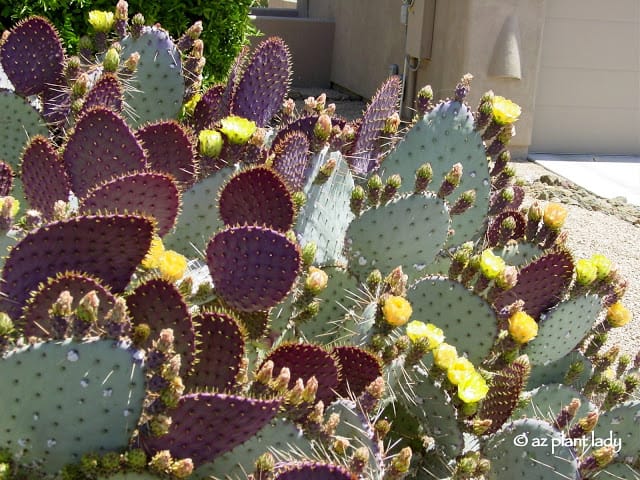
Blossoms and Wildlife with Prickly Cactus
In spring, the Santa-Rita prickly pear graces the landscape with lovely yellow flowers that later give way to red fruit during the summer months. Keep in mind that javelina, rabbits, and pack rats are occasional visitors that might nibble on the pads, while pack rats ingeniously use the pads to build their homes.
Handle with Care: Dealing with Spines and Glochids
Prickly pear pads are covered with clusters of 2″ spines and tiny spines known as glochids. Glochids are especially irritating to the skin and easily detach from the pad, making them challenging to remove. When handling these prickly cacti, use multiple layers of newspaper or a piece of carpet to protect your hands. Avoid gloves, as glochids can render them useless.
Removing Glochids Caused by Prickly Cactus
If you encounter glochids with prickly cactus, there are different methods to remove them, including applying Elmer’s glue, allowing it to dry, and then peeling off the glochids. However, many find greater success using duct tape for a more efficient removal process.
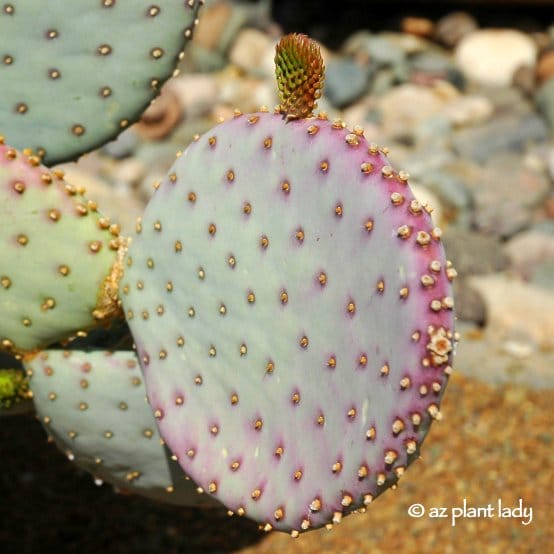
Versatile Uses in Landscaping
Beyond being a landscape accent, the Santa-Rita prickly pear serves as an excellent screen. Surprisingly, it can thrive in containers as well, although it’s essential to keep them away from high-traffic areas. These resilient cacti flourish in full sun or light shade and well-drained soil.
Low-Maintenance Prickly Cactus Beauty
Santa-Rita prickly pears are incredibly low-maintenance plants. When pruning, use tongs or newspaper to handle the trimmed pads. While they are highly drought-tolerant, occasional watering during the hot summer months, especially in the absence of rain, can enhance their appearance. Shriveled pads signal acute drought stress, so a little extra water can work wonders.
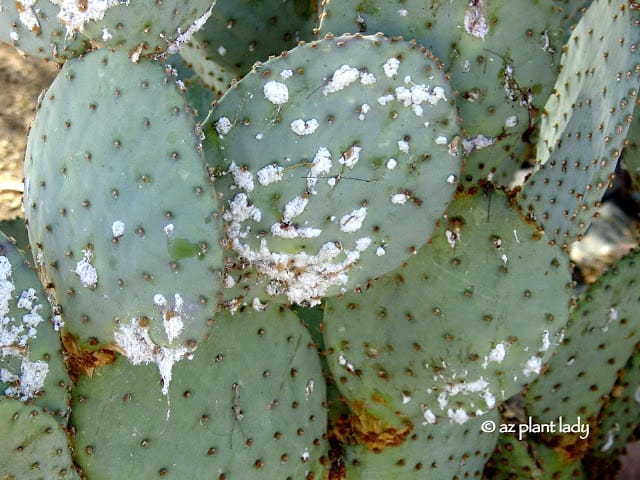
Addressing the Cottony Mystery on Prickly Cactus
Some might mistake white, cotton-like areas on the pads as a fungal infection, but it’s actually caused by a small insect known as cochineal scale. Removing this cottony mass is simple—just spray it off with a strong jet of water from the hose.
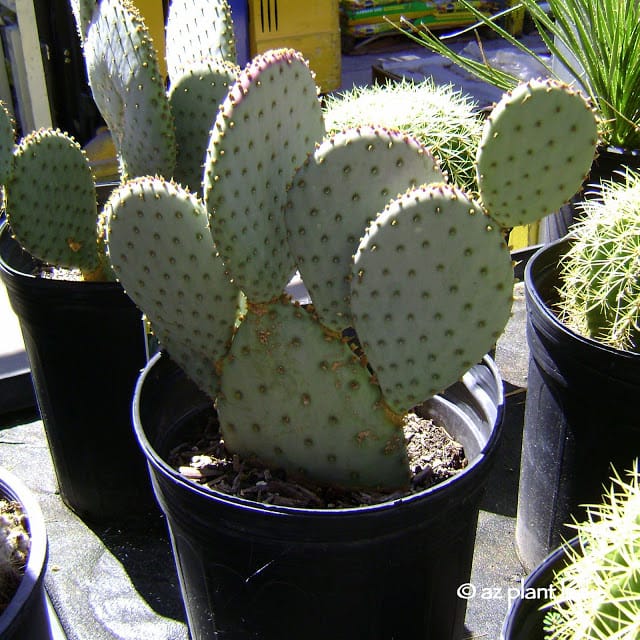
Propagation: A Simple Guide
You can propagate Santa-Rita prickly pear cacti with ease. Simply cut off a pad that is at least 6 inches tall, let it callus upright in a shady, dry spot for about two weeks, and then plant it with the cut end down.
Plant with the cut end down, do not water for the first month because the bottom is susceptible to fungal infections. After the first month, water every 2 – 3 weeks until established.
Timing Matters
Planting in the summer requires shade until the cactus is established (approximately three months). However, it’s often advisable to wait until spring when the soil warms up for planting, especially in regions with cold winters.
Renewed Growth: Pruning and Propagation
For those with established Santa-Rita prickly pear cacti, you can rejuvenate growth by pruning or starting anew. Simply remove the cactus, cut off some pads, and replant them in the same location. Many have embraced this method and have been delighted with the results.
An Interesting Historical Fact
The Aztecs would cultivate prickly pear cactus infected with cochineal scale because the insects secrete a dark red dye with crushed. This was used to dye cloth. The Spanish exported this dye from Mexico back to Europe where it was used to dye royal garments and British military uniforms. The dye was highly valued by the Spanish, next to gold and silver. It takes 70,000 insects to produce 1 pound of dye.
*This is but one of many beautiful prickly pear species available to the home gardener. Do you have a favorite species of prickly pear cactus?

 Noelle Johnson, aka, 'AZ Plant Lady' is a author, horticulturist, and landscape consultant who helps people learn how to create, grow, and maintain beautiful desert gardens that thrive in a hot, dry climate. She does this through her consulting services, her online class Desert Gardening 101, and her monthly membership club, Through the Garden Gate. As she likes to tell desert-dwellers, "Gardening in the desert isn't hard, but it is different."
Noelle Johnson, aka, 'AZ Plant Lady' is a author, horticulturist, and landscape consultant who helps people learn how to create, grow, and maintain beautiful desert gardens that thrive in a hot, dry climate. She does this through her consulting services, her online class Desert Gardening 101, and her monthly membership club, Through the Garden Gate. As she likes to tell desert-dwellers, "Gardening in the desert isn't hard, but it is different."

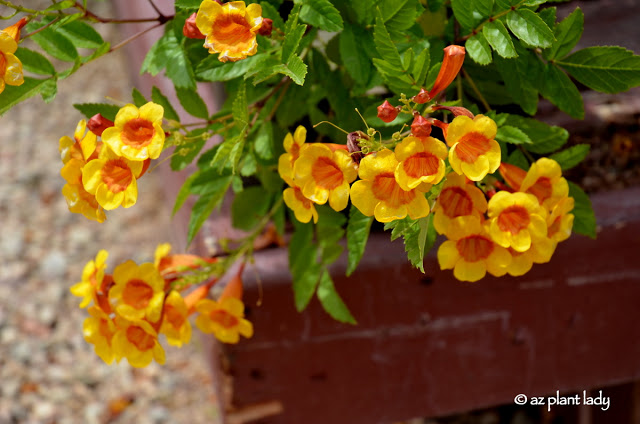
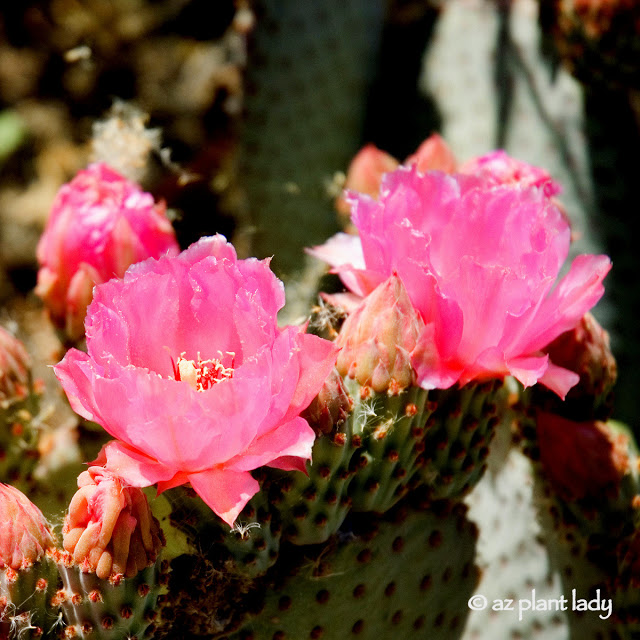
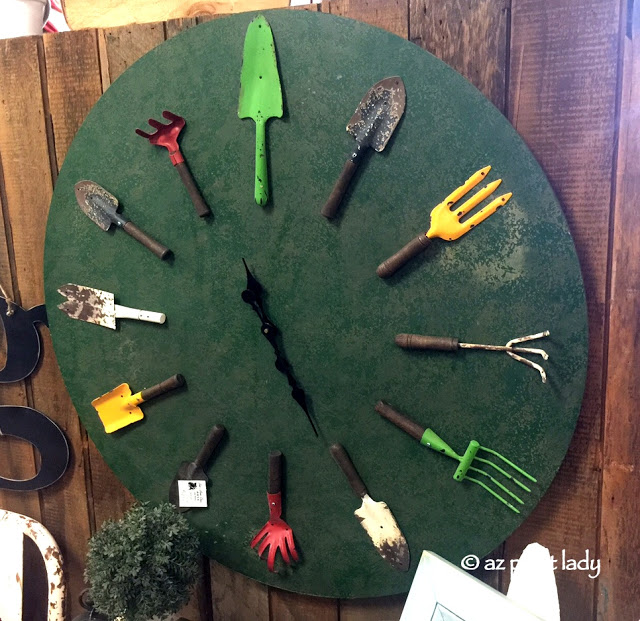
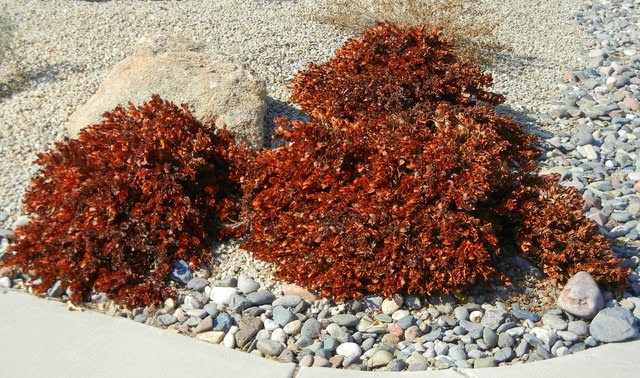
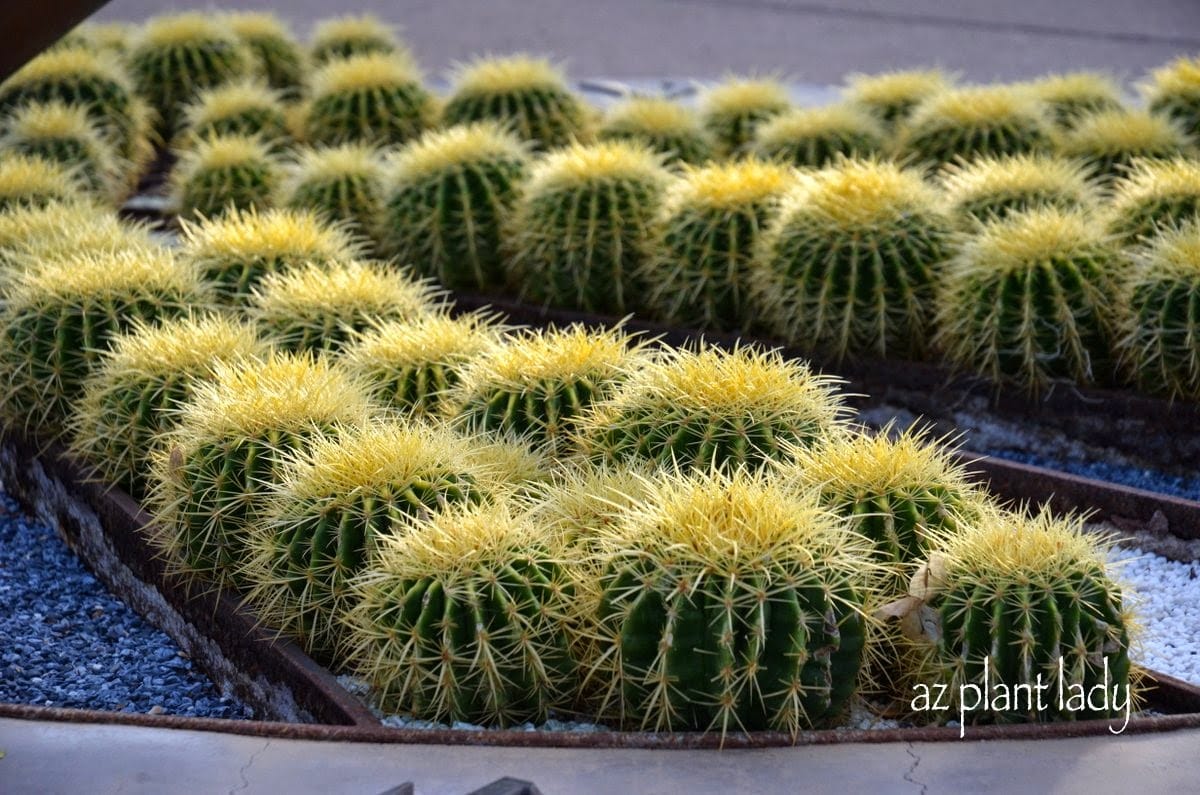







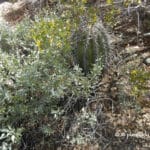
As a matter of fact, when using the hose to remove the Cochineal Scale, one can see the red coloring in the water if they look carefully. It is easy to get rid of and stay on top of. I wish all garden pests were this easy to control!
I am not sure it makes a difference with cactus, but I try to do this in the early morning before the sun gets too hot and which also provides plenty of time for the plant to dry.
I never knew their was a purple prickly pear. It is an unusual, but beautiful shade for a cactus. And to think it is native and not hybrid. Thanks for all the information on it.
Aha, I've been wondering how to leave a comment. Marvellous plants, love that subtle blue grey colour. I have tablets sitting in my kitchen cupboard which contain extract of prickly pear and are great for preventing jet-lag and avoiding hangovers! Something to do with heat shock proteins.
Thank you all for your comments. Jeff, I agree…it is so easy to get rid of Cochineal Scale, if only other insect infestations were so simple.
Yan, I have heard of so many different things that Prickly Pear extract is good for. I will need to use it next time I travel.
I love your purple prickly pear. I have never seen this before. The yellow flowers are pretty too.
Oh, Noelle, you just made my day! This is the very first time that I see a PURPLE cactus! My life is fulfilled now.
I just propagated a prickly pear. It's really growing fast. I love the purple one. I've never seen one before. I love your photo of the cactus blooming. I live in Austin and I think we have a lot of the same plants in common. 🙂
Hi Tatyana. I am so glad you like the Purple Prickly Pear. Their color is really so beautiful.
Hello Amy. I love the fact that we can grow many of the same plants in AZ as you grow in TX. Thank you for commenting.
Noelle,
Thanks for adding the bit about clicking on the title to leave a comment. For some reason I didn't get it!!
Incredible coloration on the prickly pear. As beautiful as any bloom. Take care, Alice
These are stunning, and so sculptural. The yellow flowers are an extra bonus. We have a native opuntia in Ontario, which is kind of cool, but ours is much more unassuming.
You have a great blog ~ I've just spent a little time reading some of your posts and it's really interesting. So sad about the little cactus wrens. The purple prickly pear is gorgeous. There will be many days in the upcoming months when I will wish I lived where you do! (I'm not a snow lover). I'll have to come by and read your blog then.
Purple prickly pear, Purple prickly pear, Purple prickly pear, Purple prickly pear, Purple prickly pear,
let's all say that real fast ..lol
love the purple ~ hugs, Cherry
My beautiful Santa Rita is getting a dark patch near the bottom and is starting to collapse. I just bought this one and transplanted it to a large pot. I have not been watering it. Is it because it's getting top heavy? I have another thats doing fine and it has quite a few "branches"? It's a beauty and I dont want to lose it! Any suggestions?
Thanks,
Julianne
Hi Julianne,
I'm sorry to hear about your Santa Rita prickly pear. The black spot sounds like you may have rot, which would lead to its collapse. Sadly, if that is the case, there is not much you can do at this point. However, you could cut off some of the pads and plant them instead. They will grow into a new prickly pear. Best of luck!
Noelle 'az plant lady'
Opuntia santa-rita is a great plant. I’ve built a photo gallery of the plant on our website, Opuntias of the USA.
https://www.opuntiads.com/opuntia-santa-rita/
Joe
Hi Joe,
Great website! It never ceases to amaze how much I love these prickly cactuses, despite being stuck several times 😉
What happened to the little cactus wrens?
Hi Kelly,
Kathleen is referring to another blog post where I talk about a saguaro cactus that fell during a storm. There was a mama cactus wren and her babies who were living in the saguaro who also died when it fell.
Great- info. We planted one of these in early spring and have probably been giving it way too much water- 3 times a week on a drip system, would this be what is causing the ears to actually shrink dramatically in thickness ? We turned off all water to the plant a week ago and are crossing fingers.. Thx
Hi Shaun,
You are correct that they have been overwatered. For a typical prickly pear, watering monthly May through August will keep them healthy and looking their best. Other than that, they generally don’t need supplemental water for the rest of the year.
Thank you so much for the response- Our pear is located in St George, UT at about 2600 feet- We do get a number of mornings below freezing and snow once in a awhile, any wintering tips ?
Hi Shaun,
They are supposed to be hardy to 10 degrees F. So hopefully they will be okay 🙂